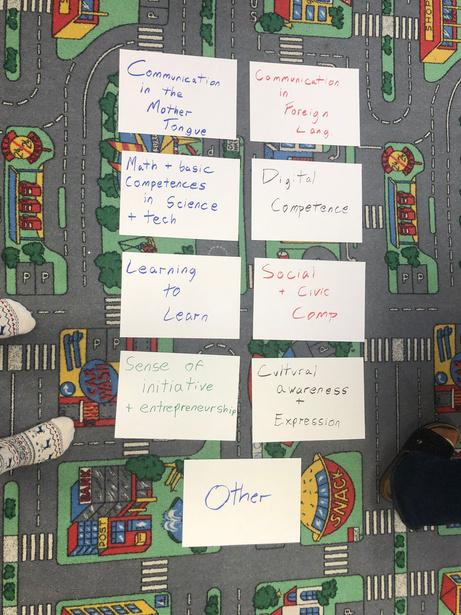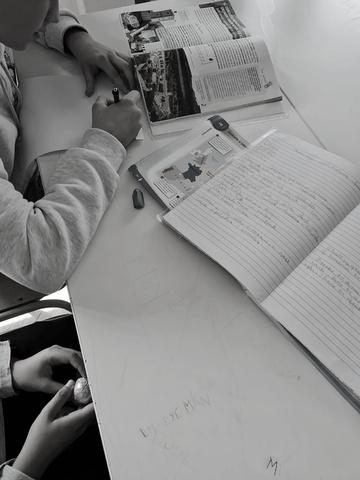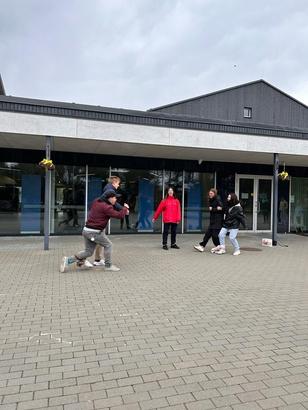1ST WITH HONOURS, A PANOKE AND ERASMUS PLUS PRODUCTION















The project aimed to support 24 youth workers and educators (guided trainers) from different EU programme countries in the development of their skills and the improvement of the activities and methodologies put into use when working on group and leadership dynamics; oriented towards a better awareness of interculturality with all disadvantaged groups in society.
As the world becomes more internationalised and globalised, people from “drastically” different cultures have started to interact and observe each other in ever increasing amounts It has become a part of everyday life to experience what others in faraway countries are doing day by day, and moment by moment. The digital environments in which we cohabitate with each other have broadened our horizons significantly, and the costs of travelling to far off destinations have never been as low.

Yet, when it comes to working together and interacting with people from different cultures at a more local or personal level, it becomes very easy to set aside someone’s quirks and characteristics as being solely due to some arbitrary label, such as a national identity or gender; often ignoring the multitude of intersectional identities the person in question has. This often creates a wider gap in the disadvantages of certain groups in society, preventing the social cohesion we so desperately need in these trying times
With this project, we took a critical look at how group dynamics and leadership can be aided and abetted through a greater understanding of interculturality; rather than looking at it through the simplistic lens of only national cultures, but through other forms of cultures and identifications as well: different nations, regions, cities, backgrounds, economic and social class, gender identity, age, minority, religion, and much more We focused on methods on how to empower youth and youth workers to actively, effectively, and in the most “humanly”-friendly possible, work together and lead each other.
By getting a better picture of what was necessary in working together with others, be they people of your in-group, minorities, refugees, or disadvantaged youths, intercultural understanding definitely played a big role And when it came to leading a diverse group of people, it was seen that being able to empower each individual comes with it’s own set of issues as well, whereby an understanding of how to accept power dynamics, cultural norms, and hierarchical roles plays/ed just as important a part in the entire dynamic. It was noted that this can range all the way from different ways of personal interaction to generational change.
IT WAS ONLY THROUGH ACCEPTING THE ROLE OF INTERCULTURAL COMMUNICATION, DIALOGUE, AND LEARNING IN GROUP WORK AND LEADERSHIP DYNAMICS THAT PARTICIPANTS CREATED INCLUSIVE, SUSTAINABLE LIVING AND WORKING ENVIRONMENTS FOR ALL INDIVIDUALS INVOLVED IN THEIR DEVELOPED SESSION PLANS AND ACTIVITIES BOTH IN PAIKUSE AND BACK IN THEIR HOME COMMUNITIES.


THIS WAS ACHIEVED BY ORGANISING THE FOLLOWING ACTIVITIES:
A1 - INTRODUCTORY TRAINING COURSE 21 PARTICIPANTS
A1.5 - LOCAL ACTIVITIES AND ACTIONS (NUMEROUS YOUNG PEOPLE)
A3 - CAPACITY BUILDING AND EVALUATION SEMINAR 12 PARTICPANTS
The main aim of the project was to raise awareness of the roles of interculturality and intersectionality in group and leadership dynamics in order to tackle the social exclusion of minorities, migrants, refugees, and disadvantaged youths with the help of non-formal methodologies.
The objectives reached were:
to create an environment aimed at developing, experimenting, and sharing innovative methodologies and tools for a human-centered forms of group dynamics and leadership
to contribute to the professional and personal development and to improve the competence of the youth workers and educators
to contribute to improve quality in youth work, at the local and european level, to empower youth workers to become active multipliers able to improve their local working and living environments
to engage and empower disadvantaged youth, specifically young migrants/refugees and youth from cultural and ethnic minorities, giving them the opportunity to bring positive change



*Communicate with language limitations
*Create a strategy to complete the maze as a group
*Adapt and overcome problems that arise
*Trust the team to guide the blindfolded person to the finish line
ACTIVITY DESCRIPTION:
5min: Before the rules are explained the group has to choose one person who will be King/Queen �� The King/Queen is blindfolded and separated from the group Rules of the game are explained to the rest of the group
10min: The group has to come up with a strategy on how to communicate to guide the King/Queen through the maze from start to finish. It's important that the King/Queen has NOT seen the maze.
30min:Play the game from start to finish. Participants take turns guiding the King/Queen through the maze by saying one word and one word only. If the King/Queen steps on the line they have to start again, or if someone says 2 or more words they have to start again. The King/ Queen can also ask questions which the rest of the group can answer by saying one word at a time.
10min: Evaluation:
*How did you feel?
*How did you feel when you failed?
*How did you come up with the strategy on how to communicate?
*Was it easy to follow the instructions?
*Did you trust the team completely?
PREPARATIONS: CREATE THE MAZE
MATERIALS: TAPE & BLINDFOLD
AGE GROUP: TEENS
GROUP SIZE: 10-20 PARTICIPANTS
NORMALLY THE GAME IS PLAYED IN A BIG GROUP, AND PRTICIPANTS NEED TO BE OF SIMILAR AGE. IF DEEMED NECESSARY THE GROUP CAN CALL TIME OUT TO RETHINK AND COME UP WITH A DIFFERENT STRATEGY.
To improve ability of teamwork, self-expression, creativity and time management.
5’ Introduction (who we are, why and what are we going to do)
15’: Evolution game: Introduce the rules of rock, paper, scissors as well as the way you evolve or devolve if you win or lose. (Start as bacteria - chicken - dinosaur - monkeyhuman - Finish as a Robot) To recognize who is who, participants have to act like stated creatures; they can only play with their own species.
15’: Drawing/story circle: Divide them into teams (one team for drawing and one for the story story) and select a theme Those who are drawing are each given a piece of paper and a pen and start drawing After 45 seconds they stop and pass the paper to the left Then again they draw for 45 seconds This repeats until the full circle is complete For the story, we write one sentence and each person reads only the last sentence and writes a new one reading the story and exhibiting the pictures
10’: Briefing: How did you feel, did you like it, what would you like to change, would you play it again, how was it when the group failed?

Evaluation:
Evolution game: The game is prepared for children of similar ages and they need to feel secure and relaxed so they are not to shy to act like a dinosaur, chicken or a monkey. Explain the rules clearly and have discipline. Every participant in the group must try to play and be involved
Sentence/Drawing: If the group is of different ages, then the smaller children draw and older kids write We should guide and give them a specific theme to encourage their motivation There is no winner and the whole point is making a story as a group
Reflection:
Participants were interested in all of the activities, they were having fun and they were interested in the youth workers Estonians are a little shy so the reflection was a problem for 2 of the groups, but then they wrote their opinions on the paper anonymously As for the croatians, there was a problem with discipline, but they were very communicative and open for expressing their opinion
The evaluation game was maybe too short so it would be good to add something to it
The sentence game was interesting and participants liked how stories went in different ways.



OBJECTIVES:



ACTIVITY DESCRIPTION:
10’: Quıck round of names followed by an explanation of the game The group has to fınd a treasure whıch ıs hıdden ın a secret locatıon They play different games and for each completed game they will get part of a clue which will lead them to the treasure
5’: Rıddle game (Inside): The group will be given a sheet of paper with 10 rıddles, and then they get about 5 minutes to discuss together and answer (the number of riddles/time to answer can be adjusted) Depending on how many of the riddles they guess correctly, they get a certain number of pieces about the first clue (the clue was rıpped into pieces earlier so that later the participants have to put it together themselves - make sure you give them the pieces ın order)
5’: Alias game (Inside): One volunteer stands in front of the group and gives as many words to explain an object as the number of letters they have for the clue. The group has to guess the word but the person explaınıng cannot use some specific words (depending on the clue). For each correct word, they will get a piece of the second clue. (Like the first one the clue has been ripped into little pieces).
5’: The Floor ıs lava (Inside). The group has to get from one point to the other without steppıng on the floor They are gıven 2 sheets to fit the participants that they place in front of them to go forward. If they reach the end in 5 minutes, they get the fırst numbered clue. If some touch the floor or they arrıve a later you can also rip this clue into pieces to only give some of it.
5’: Obstacle course (outside): The group is split in pairs and one person is blindfolded. The blindfolded need to complete on obstacle course in tıme while guided. Once the last pair has entered the course the timer starts (time depends on course length) At the end of the course they wıll get a piece of the last clue
5’: Translatıng code & looking for clue The group are gıven a photo of an old phone wıth buttons whıch wıll allow them to translate the number clues from numbers to words (3*1 is ‘c’ for example) The words form a vague descritptıon where the treasure is hidden, with this and the word clues they can find where you hid the treasure
5’: Feedback: list the different done and ask them move across the room d d h h they enjoyed the activity Eg they come closer to you if they enjoyed it, further away if




PREPARATIONS:
Look for riddles & prepare them.
Prepare ‘Alias’ game
Set up the sheets at the locatıon of the floor ıs lava game
Prepare an obstacle course outsıde
Translate the clues to code and separate them for the games
Hide the treasure
MATERIALS:
Paper & Pens
Printned pıcture of an old mobile phone (the one wıth buttons wıth numbers and letters on ıt)
Two bıg sheets (15 participants need to fıt on one sheet)
Blindfolds, Duct tape, Hoola Hoops, cones and some kınd of candy for the treasure
EVALUATION:
1st Evaluatıon: The game should be adapted for an older age (especıally Alias & riddles). Make it more like a treasure hunt where you are actually on a journey to fınd treasure (make a storyline for each station).
2nd Evaluatıon: Prepare everything so you don’t have to rush through the activitıes which can make them much less enjoyable (gıve them tıme to get into it for themselves so do not feel forced).
EXTRA INFOMATION:
The Clue should be some words hinting to where the treasure is. Translate whats needed to old phone text code and at the end they are given photo of a phone to to iıgure out how to translate it back into words. (Do not explain to them too much how the translation works and they can take some time to figure it out themselves)
Objectives:
To improve ability of teamwork, self-expression, creativity, time management
Activity Description:
5’: Introduction: Presentation who you are and what you are doing.
10’: Introduce the game and the rules

25’: Pañuelito Game: Divide the group into two teams, one person is in the middle with a scarf. The teams have to decide which number each person is The person in the middle will say a number and that number has to run, and take the scarf, the opponent has to touch the person with the scarf to win the point. We make it harder as the times goes on by joining two peoples legs and they become one number, running in blindfolds, etc. Judge these action upon the group dynamics and age.
5’: Briefing: How did you feel, did you like it, what would you like to change, would you play it again?
Preparations and Materials:
Find a big area and mark it, prepare scarfs, tape, blindfolds and other materials to make the game harder.
Evaluation:
In the beginning the participants were shy, however during the game started to have more confidence in themselves became more successful as a group. They started to develop plans and strategies to become more efficient.











